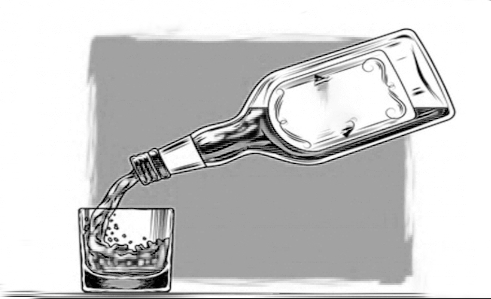CO2 sensors, also known as carbon dioxide sensors, are devices used to measure the concentration of carbon dioxide gas in the air. They are essential components in various applications, including indoor air quality monitoring, HVAC systems, industrial processes, and environmental monitoring. In industrial settings, CO2 sensors are used to monitor emissions and ensure compliance with environmental regulations. They are also used in applications such as greenhouses and controlled atmosphere storage facilities to optimize growing conditions and preserve perishable goods.

Liquor fermentation is the process of converting sugars into alcohol and carbon dioxide through enzymatic reactions. Commonly found in distilled wines like baijiu, this process utilizes sugars, such as glucose and maltose, as substrates. Sugars can be sourced from juices, rich in glucose, or cereals, containing starch that can be enzymatically converted into maltose.
Under specific temperature conditions, sugars react with enzymes to yield ethanol and carbon dioxide in a chemical process known as alcoholic fermentation. This reaction occurs anaerobically and can generate approximately 51 grams of alcohol per 100 grams of sugar. While various methods exist for alcoholic fermentation, most are conducted in specialized containers like tanks, altars, or barrels to facilitate the process.
Liquor fermentation refers to the fermentation process, which requires sugar and enzymes. Liquor, as a kind of distilled wine, is made from starch or sugar through fermentation or distillation. Fermentation is an essential step in the preparation of baijiu. Sugars include glucose and maltose. Juice usually contains a lot of glucose and can be directly fermented. Cereals contain a lot of starch, which can be processed to produce maltose.
Alcoholic fermentation is a chemical process wherein sugar reacts with enzymes at a specific temperature, yielding ethanol and carbon dioxide. This process, known as alcoholic fermentation, can occur anaerobically and typically generates 51 grams of alcohol per 100 grams of sugar. Various methods exist for alcoholic fermentation, commonly conducted in specialized containers like tanks, vats, or barrels.
Selecting an appropriate carbon dioxide gas sensor is crucial for monitoring the fermentation process effectively. Presently, the most prevalent type of carbon dioxide gas sensors relies on non-dispersive infrared (NDIR) technology. This method involves quantitatively analyzing the selective absorption intensity of CO2 gas by measuring changes in electromagnetic radiation within the infrared spectrum.
When utilizing NDIR sensors, it's essential to choose a carbon dioxide gas sensor capable of maintaining consistent and reliable measurement accuracy and performance automatically. This ensures optimal monitoring of the fermentation process, facilitating efficient control and management of fermentation parameters.

Liquor fermentation is the process of converting sugars into alcohol and carbon dioxide through enzymatic reactions. Commonly found in distilled wines like baijiu, this process utilizes sugars, such as glucose and maltose, as substrates. Sugars can be sourced from juices, rich in glucose, or cereals, containing starch that can be enzymatically converted into maltose.
Under specific temperature conditions, sugars react with enzymes to yield ethanol and carbon dioxide in a chemical process known as alcoholic fermentation. This reaction occurs anaerobically and can generate approximately 51 grams of alcohol per 100 grams of sugar. While various methods exist for alcoholic fermentation, most are conducted in specialized containers like tanks, altars, or barrels to facilitate the process.
Liquor fermentation refers to the fermentation process, which requires sugar and enzymes. Liquor, as a kind of distilled wine, is made from starch or sugar through fermentation or distillation. Fermentation is an essential step in the preparation of baijiu. Sugars include glucose and maltose. Juice usually contains a lot of glucose and can be directly fermented. Cereals contain a lot of starch, which can be processed to produce maltose.
Alcoholic fermentation is a chemical process wherein sugar reacts with enzymes at a specific temperature, yielding ethanol and carbon dioxide. This process, known as alcoholic fermentation, can occur anaerobically and typically generates 51 grams of alcohol per 100 grams of sugar. Various methods exist for alcoholic fermentation, commonly conducted in specialized containers like tanks, vats, or barrels.
Selecting an appropriate carbon dioxide gas sensor is crucial for monitoring the fermentation process effectively. Presently, the most prevalent type of carbon dioxide gas sensors relies on non-dispersive infrared (NDIR) technology. This method involves quantitatively analyzing the selective absorption intensity of CO2 gas by measuring changes in electromagnetic radiation within the infrared spectrum.
When utilizing NDIR sensors, it's essential to choose a carbon dioxide gas sensor capable of maintaining consistent and reliable measurement accuracy and performance automatically. This ensures optimal monitoring of the fermentation process, facilitating efficient control and management of fermentation parameters.
Previous: The Role of Humidity Sensors in Diverse Environments
Next: Eight Future Directions of Sensor Trends





